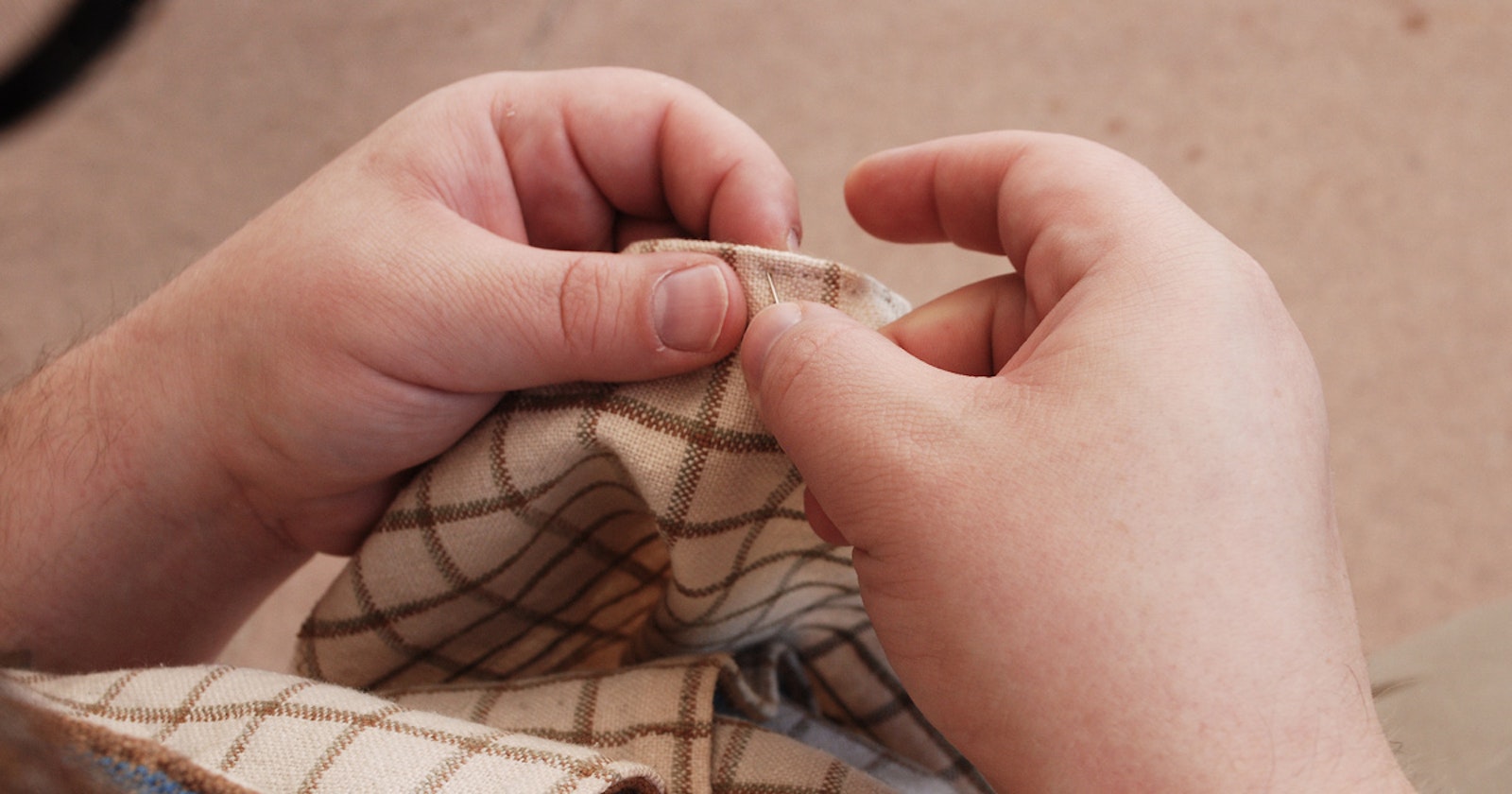The all-new, Spring 2019 issue of Spin Off_ features a special project by spinner, knitter, and weaver Devin Helmen. Devin had long dreamed of a handspun, handwoven cotton shirt. After many twists and turns, the shirt came into being._ Devin’s shirt project drew on the support of friends as it progressed from skeins of high-twist, handspun cotton to woven cloth to tailored garment. As I watched the project coming to completion, Devin told me that topstitching the collar and front bands of the shirt was an important aspect of finishing the piece. Whether worked by hand (as Devin did) or by machine (as many do), topstitching close to the edge of seams and hems adds a wonderful, sharp finish to garments made from handwoven cloth. —Kate
Detail of John Mullarkey’s handwoven vest collar. Topstitching the collar edge creates a more tailored look. (Find John at Interweave Yarn Fest this year!) Photo by John Mullarkey
Topstitch Finishes in Handwovens
By Sara Lamb
Sewing with handwoven fabric presents a few challenges for the garment maker. Our fabrics are heavier than commercial fabrics, and edges, corners, and turns can be bulkier than we’d like. So, I take a few cues from Savile Row and high-end fashion sewing: A sure sign of high-end tailoring is hand-picking of edges and seams. A fine-tailored men’s suit will have closely spaced, small handstitches all around the lapels and collar.
I generally don’t handstitch, but I almost always machine topstitch close to the edges. Topstitching makes edges firmer, keeps fabrics from slipping, and reduces the appearance of bulk at turns and corners by securing the layers together. Topstitching allows front bands to be solid and to retain a crisp, neat finish.
Detail of the Red Vest by Sara Lamb from her book The Practical Spinner’s Guide: Silk. The vest has topstitching around the armholes, hem, and front edging. Read more about weaving with handspun in Sara’s book Spin to Weave. Photo by Joe Coca
My new obsession is topstitching all seams, not just collars, bands or edges. High-end clothing is, for two reasons, generally built with wider seam allowances (affiliate link) than those garments either made by those sewing at home or acquired off-the-rack: First, wider seam allowances will help the seams lie flat—they don’t pop up; they stay where they are ironed. Secondly, wider seam allowances allow for the alterations and adjustments of custom fitting.
But I am parsimonious with my seam allowances. After spinning for months, I want to weave the narrowest possible fabric I can with the least amount of waste I can get away with. So, my seam allowances are generally a scant ½ inch. On most garments, after washing and wearing, I can press them if needed, including the seam allowances, so they stay flat and open. But with lined garments, I cannot get at those seams.
So, I have taken to stitching two lines close to either side of the seam to hold the seam allowances flat. Originally for practical reasons, it turns out I totally love the look of that little ridge that the stitching creates along each seam. The side benefit is having a stronger seam—three lines of stitching being greater than one—which also appeals to me!
Photo by Sara Lamb
Sara Lamb is a longtime handspinner, weaver, and dyer with more than 30 years of experience. She is the author of several books and videos, and has been published in Handwoven and Spin Off.
Inspired to spin, weave, and wear your work? Read more sewing tips from Devin Helmen inSpin Off!
Featured Image: Detail of Devin Helmen’s handspun, handwoven Tattersall check cloth, topstitching in progress. Photo by Kate Larson




